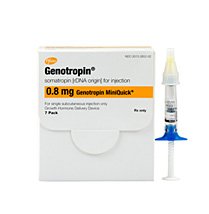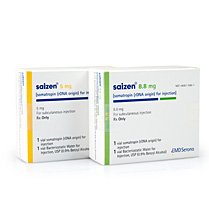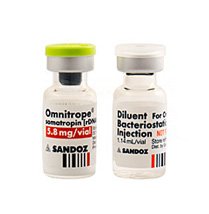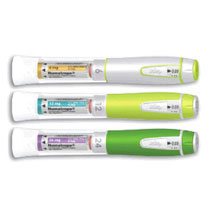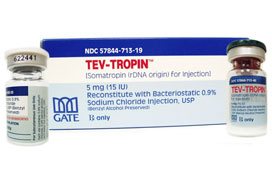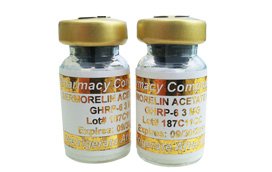Testosterone Therapy Before and After Treatment for Low T

Testosterone deficiency, also known as hypogonadism, is responsible for many men reporting a loss of interest in sex, weight gain, brain fog, and depression. These are only a few of the symptoms that also plague women with low testosterone levels. By understanding the facts about testosterone therapy, before and after treatment for Low T, you will be able to determine if this is the right direction for you to take.
Male or female, please know this – your body will always need an ample supply of testosterone. You need it for your heart, brain, metabolism, hair, libido, fertility, and overall well-being. Abnormally low testosterone levels can increase your risk of developing the following:
- Osteoporosis
- Type 2 diabetes
- Anemia
- Cardiovascular disease
- Metabolic syndrome
- High blood pressure and cholesterol levels
- Dementia
- Depression
By turning to TRT – testosterone replacement therapy – before and after changes in your body, brain functions, health, and appearance will astound you. Most people report improved satisfaction in all areas of their lives, including relationships, friendships, activities, work productivity, and quality of life.
When describing testosterone therapy before and after results, most people report improved satisfaction in all areas of their lives.
Positive Effects of Testosterone on the Body
The best way to judge your testosterone therapy before and after positive effects is through photographic evidence. By taking pictures of your body and face before starting TRT, you can follow your journey, especially at the three and six-month marks when changes are evident.
Here are some of the prominent positive effects of testosterone on the body:
- Sex Drive – Testosterone revs up the androgen receptors in the brain that regulate sexual desire. Women typically report improved vaginal lubrication and heightened orgasms.
- Erectile Functions – Men often experience more frequent morning, nocturnal, and stronger, longer-lasting erections due to improved red blood cell production and better circulation.
- Metabolism and Energy – Testosterone plays a significant role in lipolysis and the processing of food. With improved metabolism, energy levels increase.
- Muscle Mass – Androgen receptors in muscles utilize testosterone to stimulate muscle growth and strength.
- Weight Loss – Increased lean muscle boosts basal metabolic rate to burn more calories and promote weight loss. Better metabolic function helps target stored fat for fuel, resulting in loss of fat mass.
- Bone Density – Testosterone promotes osteoblast and osteocyte activities, stimulating new bone growth and helping regulate bone remodeling (turnover and resorption of old bone cells) to strengthen the skeletal structure of the body.
- Brain Functions – The brain is home to a wide array of androgen receptors that help support attention, motivation, learning, cognitive processing, and memory.
- Hair Growth – A low testosterone to dihydrotestosterone (DHT) ratio can decrease hair growth. TRT can help balance hormone levels and improve hair growth, thickness, and texture.
- Heart Health – Multiple influences of testosterone on heart health include better red blood cell production and circulation, lower LDL and total cholesterol and triglyceride levels, reduced weight, and lower blood pressure. Improved cardiac capacity increases exercise potential, which further strengthens heart health.
- Mood – Testosterone works on crucial neurotransmitters in the brain to help reduce feelings of depression and improve overall mood and emotional well-being.
- Sleep – Testosterone opposes the stress hormone cortisol, which can inhibit sleep and low testosterone levels. By increasing testosterone, most people experience better sleep.
These are only some of the many low testosterone treatment, before and after results that both men and women can expect.
Negative Effects of Testosterone on the Body
Testosterone usage is not all positive. As with any medical treatment (even those sold over-the-counter), there are possible side effects. The most likely cause of adverse reactions is the abuse of the medication. TRT overuse, as in administering too high a dose, can also lead to side effects.
Possible negative testosterone treatment before and after side effects include:
- Infertility – While TRT can improve female fertility, it can worsen a man’s sperm count because the exogenous testosterone cannot enter the testes. Since higher serum levels of testosterone can interfere with natural testicular production of the hormone, spermatogenesis (sperm cell maturation) may suffer.
- Testicular Shrinkage – As the signals from luteinizing hormone (LH) and follicle-stimulating hormone decline, the testes can make less sperm, shrink, and become softer.
- Skin Changes – Higher testosterone levels can increase oil production in the skin, which can lead to acne. Some oil production is good because that helps keep the skin looking healthy and youthful.
- Swollen Feet – Testosterone can cause the body to retain fluid, which can lead to swelling in the ankles and feet.
- Breast Enlargement – Since some of the testosterone in the bloodstream undergoes conversion to estradiol, the increase in estrogen levels can cause gynecomastia – male breast tissue enlargement.
Other testosterone therapy before and after side effects could include aggressive or risky behaviors, mood swings, anger, depression, elevated red blood count (polycythemia), and worsening of sleep apnea. In extreme cases of abuse, testosterone usage can increase the risk of blood clots, stroke, and heart attack.
Testosterone Therapy Results By Month
Any month to month guide on testosterone therapy before and after results will be just that – a blueprint for what to expect. These benefits are not etched in stone and have quite a bit to do with how your body metabolizes and uses the TRT.
- Testosterone therapy after one month: It may take as much as 4 to 6 weeks longer than listed for you to notice specific results. However, by the end of the first month, you should be sleeping better, have more energy, notice positive changes in sex drive, and feel a bit happier. Men may even experience better erection frequency during the first month of treatment. Both males and females often report more sexual thoughts, fantasies, and desires. Inflammation markers and insulin sensitivity start to improve early in treatment, although this may not become evident for many months. Better cognitive processing is also likely during the first month of treatment.
- Testosterone therapy after two months: By the end of the second month, most people report a decrease in feelings of depression. Along with the strengthening of previous benefits, increased energy and better memory are likely.
- Testosterone therapy after three months: By this time, most people tend to notice a change in their body composition. Less abdominal fat and more lean muscle translate to a better-toned body. Reduced joint pains and improved flexibility help enhance quality of life. Exercise capacity increases, which can further help build muscle and strength. Red blood cell production begins to improve. Many women report a reduction in the symptoms of PMS or menopause. All previous benefits continue to strengthen.
- Testosterone therapy after six months: Improvements in bone mineral density begin and continue for up to three years or more.
Increased motivation, drive, and productivity are additional benefits of TRT. Comparing the testosterone before and after photos at the start of treatment to the ones at the end of six months will likely show significant improvements.
How to Get the Best Testosterone Therapy Benefits
The best way to maximize your testosterone therapy benefits is to work with an experienced hormone specialist. Having a doctor who prescribes TRT regularly provides you with the knowledge and expertise to get the best results possible.
In addition, there are steps you can take to help you get the best results from TRT, including:
- Lose weight if you are overweight, as excess weight causes testosterone levels to decline.
- Get between 7 and 9 hours of sleep each night to maximize testosterone production and usage in the body.
- Reduce stress as the hormone cortisol opposes testosterone production and functions.
- Exercise regularly to boost daytime testosterone levels.
- But back on sugar and processed foods, incorporating more lean protein, vegetables, and fruit into your daily diet.
- Avoid excess alcohol, smoking, or drugs.
For more information about testosterone therapy before and after results, please contact Greenberg Health for a free consultation by phone.

















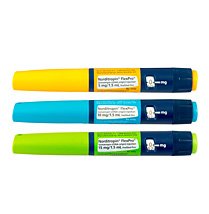
 Norditropin
Norditropin